Last Updated on 6 months by Francis
If you’re considering investing in an infrared sauna for your home, you might be wondering whether it will significantly impact your electricity bill. With growing concerns about energy consumption and environmental impact, it’s essential to understand the electricity usage of infrared saunas. In this comprehensive guide, we’ll explore the energy consumption, power usage, and cost implications of using an infrared sauna.
Before we dive into the world of infrared sauna electricity consumption, let’s take a moment to understand how these saunas work and the electrical components that contribute to their overall energy usage.
Contents
Key Takeaways
- Investing in an infrared sauna requires understanding its electricity consumption and associated costs.
- Before exploring electricity usage, it’s important to understand how infrared saunas work and their electrical components.
- Factors such as sauna size, duration, temperature settings, and insulation can impact the electricity usage of infrared saunas.
- Maximizing energy efficiency and implementing energy-saving measures can reduce electricity usage and costs.
- Compared to traditional saunas, infrared saunas are known for their energy efficiency and reduced electricity usage.
Understanding Infrared Sauna Electricity Consumption
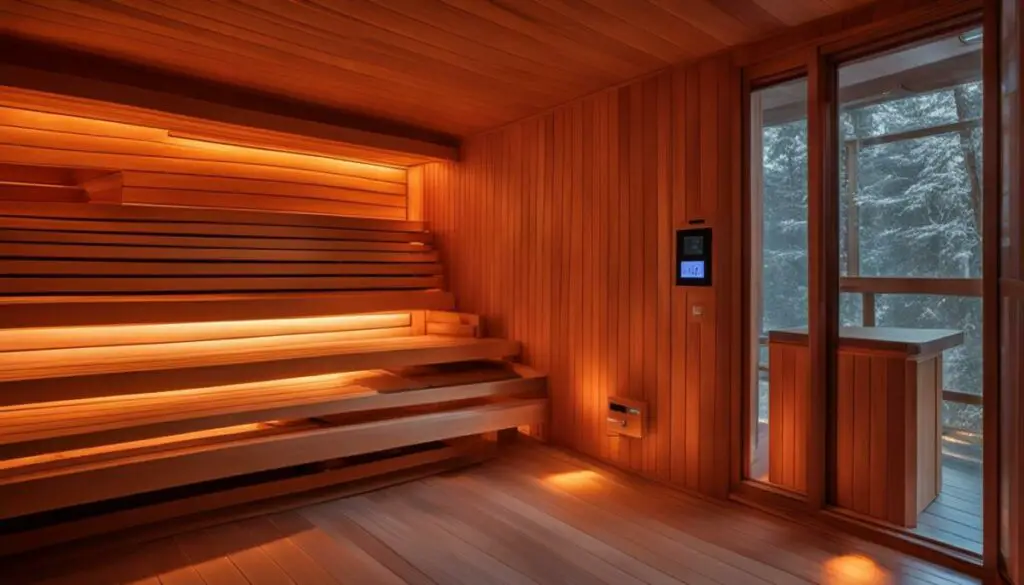
If you’re considering purchasing an infrared sauna, it’s important to understand how these saunas work and their impact on your energy usage. Infrared saunas use infrared heaters to emit radiant heat that is absorbed by the body, whereas traditional saunas heat the air in the room to create warmth. This difference in technology has a significant impact on energy consumption.
The amount of electricity consumed by an infrared sauna depends on several factors, including the sauna’s power rating, the duration of use, and the preferred temperature setting. Generally, infrared saunas consume less electricity than traditional saunas, making them a more energy-efficient option for home use.
According to the National Sauna and Steam Bath Association, a typical infrared sauna uses around 1.6-2.0 kilowatts per hour (kWh). By comparison, a traditional sauna can use anywhere from 6 to 20 kWh per hour, depending on the size and type of heater. This means that an hour-long session in an infrared sauna may cost anywhere from $0.20 to $0.40 in electricity usage, while a traditional sauna may cost upwards of $2.00.
To maximize the energy efficiency of your infrared sauna, it’s important to choose a sauna with a power rating that matches your usage needs. A sauna with a higher power rating will consume more electricity, even if you’re only using it for a short period. It’s also important to insulate your sauna properly to reduce heat loss, which can increase the electricity needed to maintain a stable temperature.
Another consideration is the temperature setting of your sauna. While a higher temperature may feel more comfortable, it will also consume more electricity. Infrared saunas typically operate at a lower temperature than traditional saunas, which reduces energy consumption and minimizes the risk of overheating.
To summarize, infrared saunas are an energy-efficient option for home use, with lower electricity consumption than traditional saunas. By selecting the right power rating, insulating your sauna, and choosing a reasonable temperature setting, you can minimize your electricity usage while still enjoying the therapeutic benefits of an infrared sauna.
How Much Electricity Do Infrared Saunas Consume?
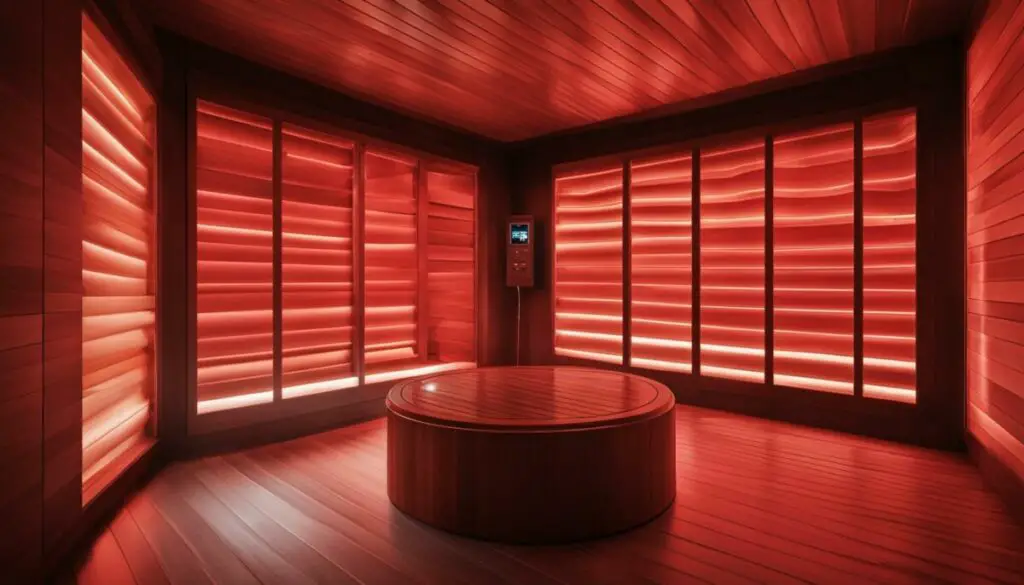
When it comes to electricity consumption, infrared saunas are known for their energy efficiency compared to traditional saunas. However, it is still important to understand how much electricity an infrared sauna consumes to budget your energy usage and expenses.
The average power usage of an infrared sauna ranges from 1.6 kW to 3.4 kW, depending on the size and model. This energy consumption is significantly lower than that of traditional saunas, which can use up to 6 kW of power.
The key contributor to an infrared sauna’s energy usage is the infrared heating elements. These elements emit far-infrared radiation, which penetrates the skin and produces heat. Unlike traditional saunas that heat the air, infrared saunas use this process to directly warm up the body, which requires less energy.
Another factor that affects an infrared sauna’s electricity consumption is the temperature setting. The higher the temperature, the more energy the sauna will consume. However, most models have adjustable temperature settings, so you can customize your experience to your comfort level while conserving energy.
It is worth noting that even though infrared saunas are energy-efficient, they still consume a significant amount of electricity. If you plan on using your infrared sauna frequently, it may be a good idea to invest in energy-saving measures such as insulation or a timer to minimize your electricity usage and expenses.
Electricity Consumption Comparison Table
| Sauna Type | Power Usage (kW) |
|---|---|
| Infrared Sauna – Small | 1.6 – 2.0 |
| Infrared Sauna – Large | 2.5 – 3.4 |
| Traditional Sauna | 6.0 |
“Infrared saunas are designed to be energy-efficient, but it is still important to understand the amount of electricity they consume to make informed choices about usage and expenses.”
Overall, the electricity consumption of infrared saunas is relatively low compared to traditional saunas. However, it is still important to consider how often you plan to use your sauna and take steps to minimize your energy usage and costs. By understanding the factors affecting electricity consumption and investing in energy-saving measures, you can enjoy the benefits of an infrared sauna while being environmentally conscious and budget-friendly.
Factors Affecting Infrared Sauna Electricity Usage
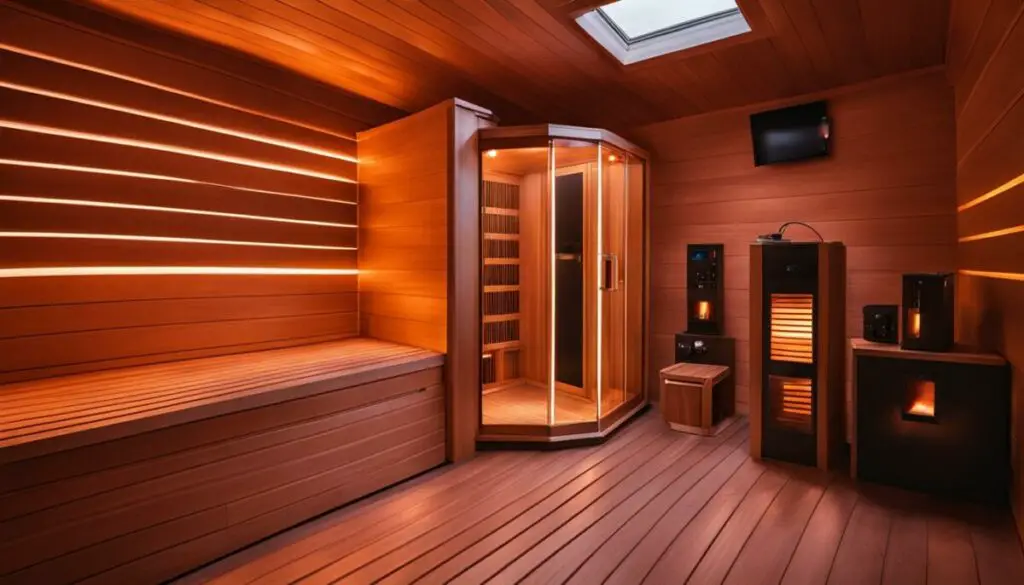
If you are concerned about the high electricity consumption of infrared saunas, it is essential to consider the various factors that can affect their energy usage. Let’s take a closer look at some of the key variables that can impact the amount of power your infrared sauna requires.
Sauna size and duration
The size of your infrared sauna and the amount of time you spend inside can significantly impact your energy consumption. Larger saunas require more power to heat up, while longer sessions will use more electricity. To minimize your electricity usage, consider purchasing a smaller sauna and limiting your sessions to 20-30 minutes.
Temperature settings
The temperature you set your sauna can also affect power consumption. Higher temperatures will use more electricity to maintain, while lower temperatures will use less. Aim for a comfortable temperature between 120-140 degrees Fahrenheit to minimize energy consumption.
Insulation
Proper insulation is crucial for reducing heat loss and maximizing energy efficiency. If your sauna is not adequately insulated, you will need to use more electricity to maintain the desired temperature. Ensure that your sauna is properly insulated to reduce electricity usage and associated costs.
Other variables
Additional factors that can impact electricity usage include the age and condition of your sauna, the frequency of use, and the local electricity rates. By taking these variables into account and implementing energy-saving measures, such as turning off your sauna when not in use, you can minimize your electricity usage and costs.
By considering these variables and taking steps to optimize your usage, you can enjoy the benefits of an infrared sauna without worrying about high electricity requirements and costs.
Maximizing Energy Efficiency in Infrared Saunas
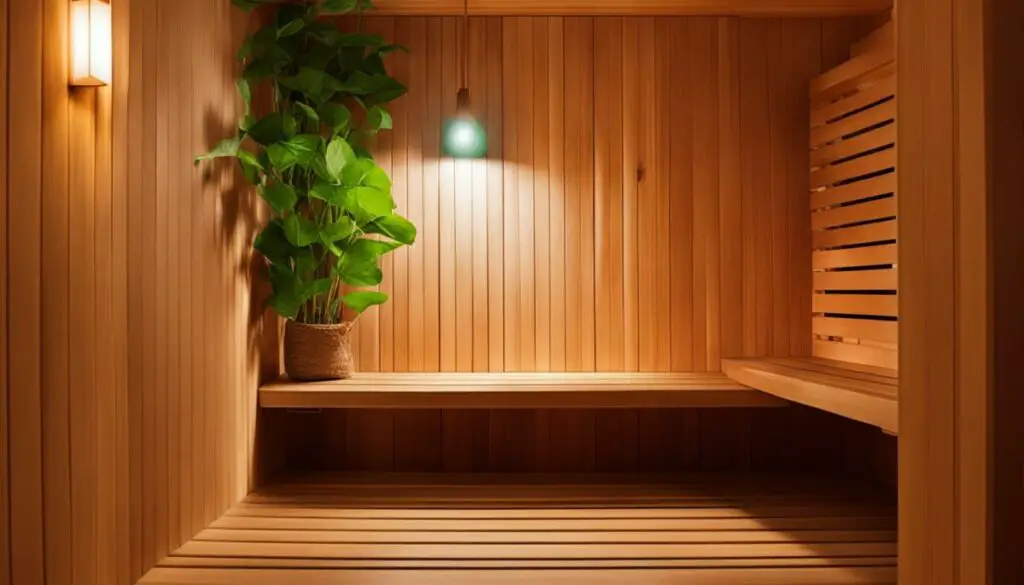
While infrared saunas provide numerous health benefits, they can also consume electricity. However, there are several ways to maximize the energy efficiency of your infrared sauna, reducing energy consumption and costs. Here are some tips to help:
Proper Maintenance:
Maintaining your sauna is essential in ensuring that it operates efficiently. Regular cleaning and proper ventilation of the room help to keep the heating elements and the sauna room in good condition, reducing energy consumption.
Insulation:
Proper insulation is critical in preventing heat loss through walls, floors, and ceilings. Adequate insulation helps the sauna maintain a consistent temperature, reducing the energy required to heat up the room. Installing weather stripping around doors and windows also helps to keep heat inside the sauna room.
Usage Guidelines:
Using your infrared sauna according to the manufacturer’s instructions ensures optimal energy efficiency. Avoid using the sauna for extended periods, as this increases electricity consumption. Limiting sauna time to 20-30 minutes per session is ideal. It is also advisable to preheat the sauna to the desired temperature before using it as this reduces the energy needed to maintain the desired warmth.
Lighting:
Using low wattage bulbs for sauna lighting helps to reduce electricity usage. Installing LED lights with motion sensors or timers can also save energy by automatically switching off when not in use.
Placement:
Positioning your infrared sauna in a well-insulated room away from drafty areas reduces the amount of energy needed to heat up the room. It is also advisable to place the sauna in a room that is frequently used to avoid wasting energy by heating up an empty room.
“By following these tips, you can enjoy all the benefits of your infrared sauna while reducing your energy consumption and associated costs.”
Comparing Infrared Saunas to Traditional Saunas
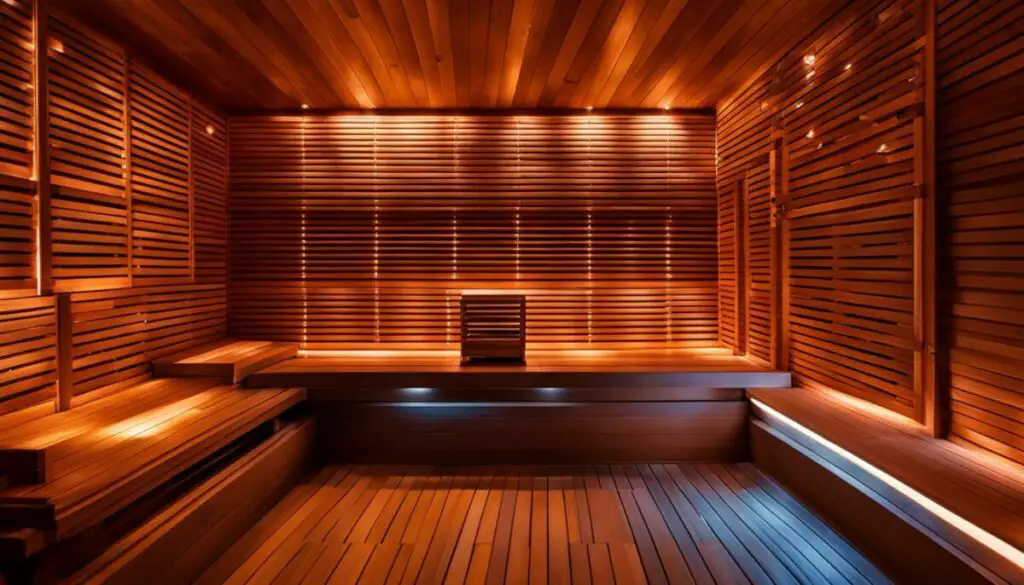
When it comes to energy usage, infrared saunas have gained traction over traditional saunas due to their efficient heating technology. Unlike traditional saunas, which rely on convection heating, infrared saunas use radiant heat to warm the body directly. This method of heating has several advantages:
- Reduced energy consumption:
- Energy-efficient heat generation:
- Improved comfort:
Since infrared saunas heat the body directly, they require lower temperatures and less energy to achieve the same therapeutic benefits as traditional saunas. As a result, the electricity consumption of infrared saunas is significantly lower than that of traditional saunas.
Infrared saunas generate heat by using infrared lamps, which emit long-wave infrared radiation that is highly efficient at warming the body. This method of heat generation is more energy-efficient than the heat generation in traditional saunas, which requires heating up a whole room.
Infrared saunas maintain a lower temperature than traditional saunas, which can reach up to 195°F (90°C). This makes them more comfortable for individuals who cannot tolerate high temperatures, such as those with cardiovascular or respiratory conditions.
While traditional saunas have their own set of benefits, such as a greater sense of social interaction and relaxation, their energy consumption is significantly higher than that of infrared saunas. When considering the energy usage of saunas, infrared saunas are the more efficient and sustainable choice.
Understanding the Cost of Using an Infrared Sauna
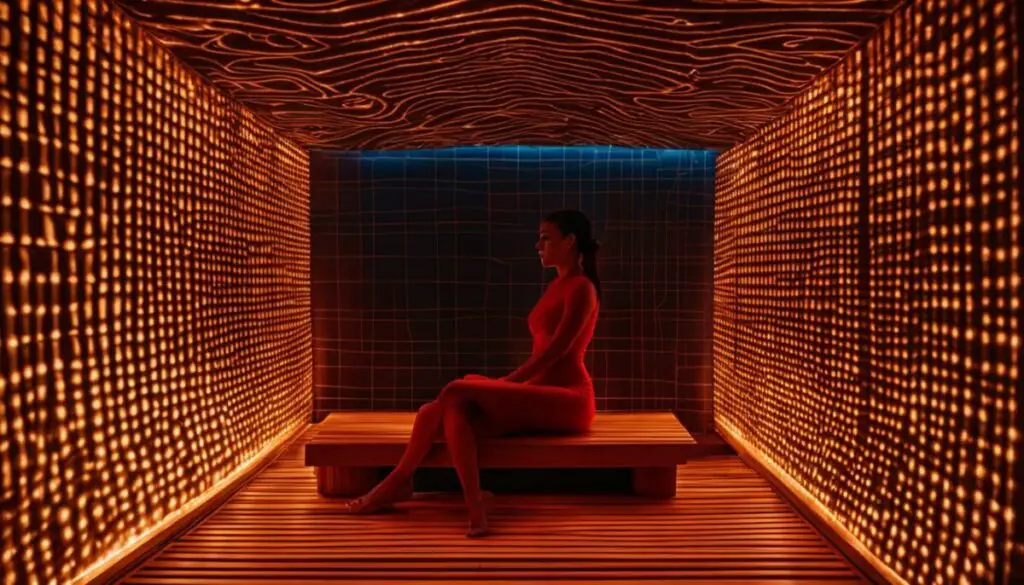
Besides energy consumption, the cost of using an infrared sauna is an important consideration. The electricity cost of using an infrared sauna depends on several factors, including electricity rates, usage patterns, and electricity-saving measures.
“The typical cost of running an infrared sauna session for one hour is between $0.25 and $1.50 per hour. However, this cost can vary based on factors such as energy rates, the size of the sauna, and insulation.”
According to energy experts, the electricity cost of using an infrared sauna is generally lower than that of a traditional sauna. This is because infrared saunas use less energy to operate and heat up faster, requiring less time to reach the desired temperature.
However, to further minimize the cost of using an infrared sauna, it is advisable to use energy-saving measures such as:
- Keeping the sauna door closed while in use to retain heat
- Using a timer to limit the duration of sauna sessions
- Using a lower temperature setting, which requires less energy
By implementing these measures, you can reduce your electricity consumption and costs without compromising on the benefits of an infrared sauna. With proper usage and maintenance, an infrared sauna can be an energy-efficient and cost-effective wellness investment for your home.
Tips for Maximizing Energy Efficiency and Minimizing Infrared Sauna Power Usage
By implementing the following tips and strategies, you can reduce the electricity usage of your infrared sauna while still enjoying all the benefits it has to offer.
1. Choose the right size sauna for your needs. A larger sauna will consume more electricity to maintain the desired temperature range. If you have a small space, selecting a smaller sauna might be a better option.
2. Shorten your sauna sessions. While longer sauna sessions may have greater health benefits, they also lead to increased electricity consumption. Reduce your sessions to a reasonable duration to lower your energy usage.
3. Adjust the temperature settings. Lowering the temperature settings can significantly reduce the amount of electricity used during a sauna session. It’s a good idea to experiment with different settings to see what works best for you.
4. Properly insulate your sauna. Insulating your sauna will help retain heat and reduce the amount of electricity required to maintain the desired temperature. This can be done by adding insulation to the walls and ceiling, as well as sealing any gaps or leaks.
5. Keep your sauna well-maintained. Regular maintenance and cleaning of your infrared sauna can improve its energy efficiency and reduce the amount of electricity used. Keep the sauna free of dust and debris to ensure optimal performance.
6. Use the sauna in conjunction with other energy-saving measures. Consider using the sauna during off-peak hours when electricity rates are lower. You can also adjust your thermostat to a lower temperature during sauna sessions to reduce the amount of energy used to heat your home.
By incorporating these tips into your infrared sauna usage, you can reduce energy consumption and minimize the impact on your electricity bill.
Conclusion
Overall, understanding the electricity usage of your infrared sauna is important for managing costs and minimizing your environmental impact. By implementing energy-saving measures and making informed choices about usage patterns and sauna settings, you can enjoy all the benefits of an infrared sauna while using less electricity.
Final Thoughts
Investing in an infrared sauna is a smart choice for anyone looking to improve their physical and mental health. These saunas offer a range of benefits, from reduced stress and improved circulation to detoxification and pain relief. By keeping the electricity consumption of your infrared sauna in check, you can enjoy these benefits for years to come, while saving money on energy bills and reducing your carbon footprint.
Get Started Today
If you’re ready to experience all the benefits of an infrared sauna, it’s important to choose a high-quality sauna and follow best practices for usage and maintenance. By doing so, you can ensure that your sauna remains a safe and effective wellness tool for years to come.
Thank you for reading our guide on infrared sauna electricity consumption. We hope that you found it informative and useful in making informed decisions about your infrared sauna usage.
FAQ
Do infrared saunas use a lot of electricity?
Infrared saunas are designed to be energy efficient. They consume less electricity compared to traditional saunas, making them a cost-effective option for home use.
How does the electricity consumption of infrared saunas compare to traditional saunas?
Infrared saunas have lower electricity consumption compared to traditional saunas. The infrared technology used in these saunas allows for more efficient heat generation, resulting in reduced energy usage.
What factors affect the electricity usage of infrared saunas?
Several factors can influence the electricity consumption of infrared saunas. The size of the sauna, duration of usage, temperature settings, insulation, and other variables can impact the overall energy requirements.
How can I maximize energy efficiency in my infrared sauna?
To optimize energy efficiency, ensure proper maintenance of your infrared sauna, including regular cleaning and upkeep of electrical components. Additionally, proper insulation, following usage guidelines, and avoiding excessive heat settings can help minimize electricity usage.
How does the cost of using an infrared sauna vary?
The cost of using an infrared sauna depends on various factors, including electricity rates, usage patterns, and electricity-saving measures. By considering these factors, you can estimate and manage the cost of using an infrared sauna.
What are some tips for minimizing electricity usage in infrared saunas?
To minimize electricity consumption, you can follow tips such as reducing sauna usage time, keeping the temperature at optimal levels, ensuring proper insulation, and utilizing energy-saving features offered by some infrared sauna models.
How do infrared saunas compare to traditional saunas in terms of energy usage?
Infrared saunas are known for their energy efficiency compared to traditional saunas. The infrared technology allows for direct heat absorption by the body, resulting in less energy waste and lower electricity consumption.
What are the cost implications of using an infrared sauna?
Besides the energy consumption, the overall cost of using an infrared sauna can vary based on factors such as electricity rates, usage frequency, and electricity-saving measures. Understanding these factors can help estimate the cost of incorporating an infrared sauna into your lifestyle.
Is it possible to enjoy the benefits of an infrared sauna while minimizing electricity usage?
Yes, it is possible to enjoy the benefits of an infrared sauna while minimizing electricity usage. By implementing energy-saving measures, following usage guidelines, and making informed choices, you can reduce electricity consumption without compromising on the wellness benefits of infrared saunas.
What should I consider before adding an infrared sauna to my home in terms of electricity consumption?
Before adding an infrared sauna to your home, consider factors such as the sauna’s energy efficiency, insulation, and your electricity consumption patterns. Understanding these aspects can help you make an informed decision and manage electricity usage effectively.

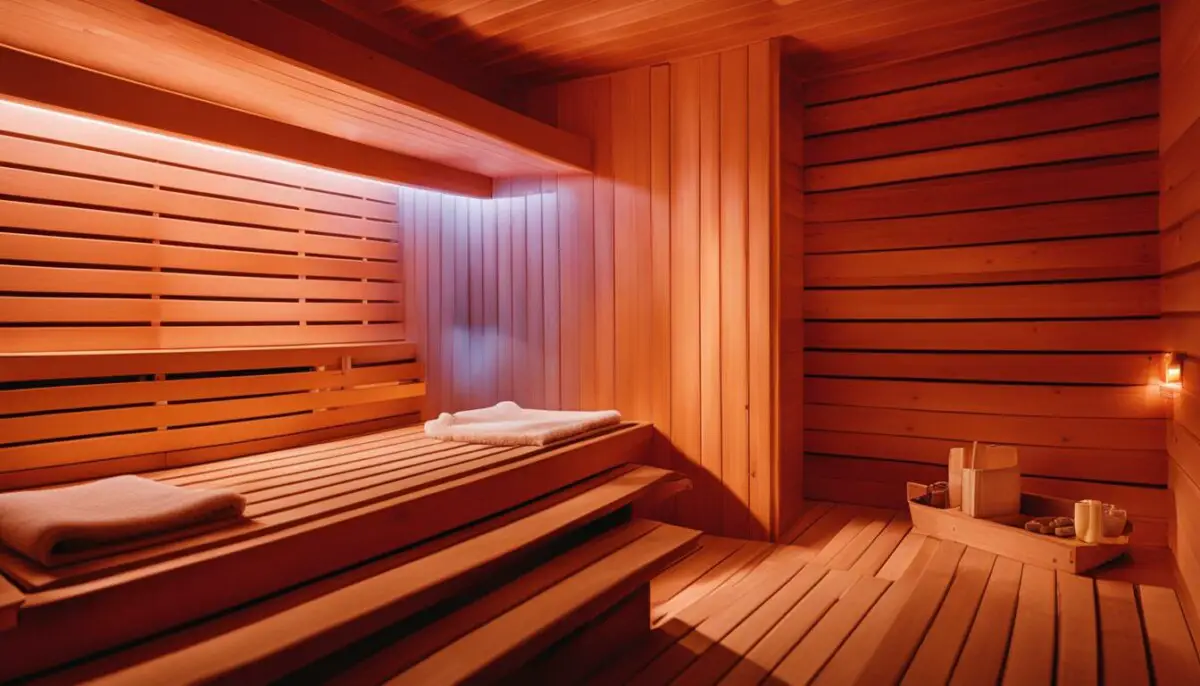

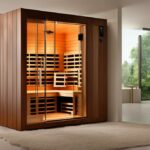
.jpg)




